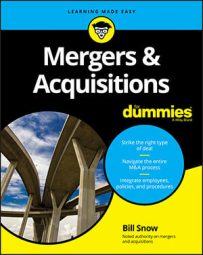When Buyers make acquisitions in a mergers and acquisitions (M&A) deal, those purchases can take the form of a complete, 100-percent buyout (mainly for PE firms), a majority investment, or even a minority investment.
As the name suggests, a buyout occurs when 100 percent of a company is sold to another company. A buyout results in a change of control, and although 100 percent of the outstanding stock may be acquired to effect the transaction, it’s possible for Buyer to acquire Seller’s assets (instead of buying stock) and still have a buyout.
In other words, buying 100 percent of the stock means you buy 100 percent of the assets, but buying 100 percent of the assets doesn’t necessarily mean you buy any of the stock.
The new owners may allow the management of the acquired company to acquire the new shares either for a discounted price or as a part of some sort of stock option plan.
A majority investment is when Buyer acquires greater than 50 percent of the company. A minority investment is when Buyer acquires less than 50 percent of the company.
Regardless of whether the transaction is a majority or minority investment, in most cases Buyer buys the stock of Seller. If the acquired stock is sold by an existing shareholder, that transaction is called a recapitalization. In this case, no new shares are being created; existing ones are simply changing hands.
If the acquired stock is the result of a new issuing, however, the money raised from selling those shares goes to the company. This setup is often called growth capital because the company retains the money for the purposes of facilitating growth.

